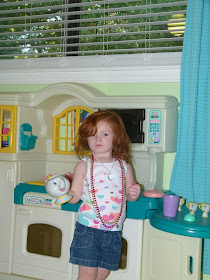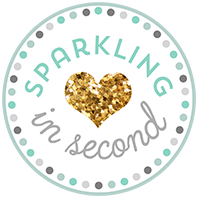I remember walking home from school with my friend Susan, and the jam sandwiches her Nana made us every day. I still love jam sandwiches! I remember Douglas A. singing along with the Winnie the Pooh song at school. I remember the blocks, dress ups, boxes of junk for creating with, and lots of recess time. I remember Mrs. Potts, my first and second grade teacher, reading The Very Hungry Caterpillar, and the pants and hat she wore. I remember we had lots of windows, and a big carpet on the floor, and I remember the school library, and the books we took home to read.
All the things I remember about my early learning years are fun things. School was a fun place to go, full of marvelous, child appropriate things to do and see. We learned our letters and sounds by singing fun songs (my favorite was Rrrrrrrats are rrrrrrrunning, rrrr, rrr, rrr, because we were encouraged to roll the r, and it was fun!). I learned to read with the Spot books by Eric Hill, and it was just a natural part of what we did. I don't remember any flashcards or worksheets, although I do remember we had some mimeographs once in a while, and they smelled funny! I loved everything about school, and knew even at 5 years old that I wanted to be a teacher. (That was going to be my day job, until I could be a famous singer like Sally Boyden from the Johnny Young Talent Time show!)
When I graduated college I got my dream job, teaching first grade!
What could be better? I had ducks and fish and butterflies in my classroom (I do NOT recommend ducks by the way!), and we read and read, and I think we all had fun while we learned. Sure, there were spelling tests, and timed math tests every week, and end of year tests, and May was always a whirlwind of end of year activities and deadlines and requirements, but I loved it. Yes, over the six years I taught in the public school system we did add more requirements every year. A few more forms, "the test" style questions for first graders - to prepare them for third grade testing, and yes, we did start using scripted math and language arts curriculum, but I could supplement them with my own ideas and activities. It was still good, but, there was an edge to things, something that didn't feel right to me.
When my youngest was born, a couple of my teacher friends suggested I should stay home and teach my kids and theirs, and when I thought about it, I said yes. The money and benefits didn't come close to comparing to a professional salary, but the value of being at home with my children, and of making their early childhood years amazing was well worth it.
Friends told me stories of the continuing changes in the school system, and I was glad to be out.
I think the best thing about being at home with the children, was that I realized I could teach at home, and do it however I wanted. I got to examine my core values and beliefs, and then live them. We took long walks to the playground every day, collected dandelion flowers and stomped in puddles.

My children learned to read, not with flashcards or worksheets, but with my friend Spot the dog, Eric Carle books, and marvelous books on tape, like The Dragons Are Singing Tonight by Jack Prelutsky. I learned a tremendous amount about how children learn, and developed my program around that. I'm pretty opinionated about early childhood, because I've spent the last 16 years deeply and passionately involved in it.
All of this is my backstory for this week's TpT seller's challenge:

When I saw this blog topic this morning, I thought, what? Yes, I do dream big, but to say that I'd like to make a living doing TpT full time seems a bit... well... ordinary.
I'm very lucky right now to be able to TpT full time, and I really hope that I can build my business to the point that I feel justified with this as my only job, and that I can make a meaningful financial contribution to my family. I'm living the dream, working toward that goal!
The thing is, not everyone is living the dream. Many, many excellent and outstanding teachers are still working in our public school systems, doing the best that they can for their students, within the constraints that have continued to grow, sometimes to the point of choking out the fun. My educator friends tell me they can no longer do many of the things that we know are best for children's learning: cook with them, do craft projects, read poetry, be kids!
My dream, what all my 22 years as an educator have prepared me for, is to make it easier for teachers and students to learn in playful, joyful, age appropriate ways. I know time is short, and I'm so very sorry, I know the constraints are tight. Finding fun learning activities that also meet the various standards, whether that's Common Core or state standards, is getting harder. The joy of learning and of teaching is all too often being sucked right out of our schools, in the name of rigor and testing. I hear of early childhood classroom where you can't find a toy kitchen, dress up bin, or sand and water table, but worksheets and flashcards are at hand. I hear of elementary schools with little or no recess time, limited physical education and music time, and I wonder how our kiddos manage!
I've been so very blessed to spend the last 16 years playing on swings, digging in the garden, reading books aloud, and doing jigsaw puzzles with children, who have learned a love of nature, understanding of plant and animal life cycles, mathematical and logical skills, and to love reading and how to get along with each other. Now I want to share that joy with as many teachers and children as possible, to help teachers put joy and playfulness back into their classrooms, without compromising learning goals or breaking the bank. I want my teaching materials to help make teaching and learning a little easier, and a little more fun. I want to make a difference!
Thank you so much to Third in Hollywood, Teach Create Motivate, Sparkling in Second Grade, and Peppy Zesty Teacherista for hosting the TpT sellers challenge, and posing this thoughtful prompt!

































